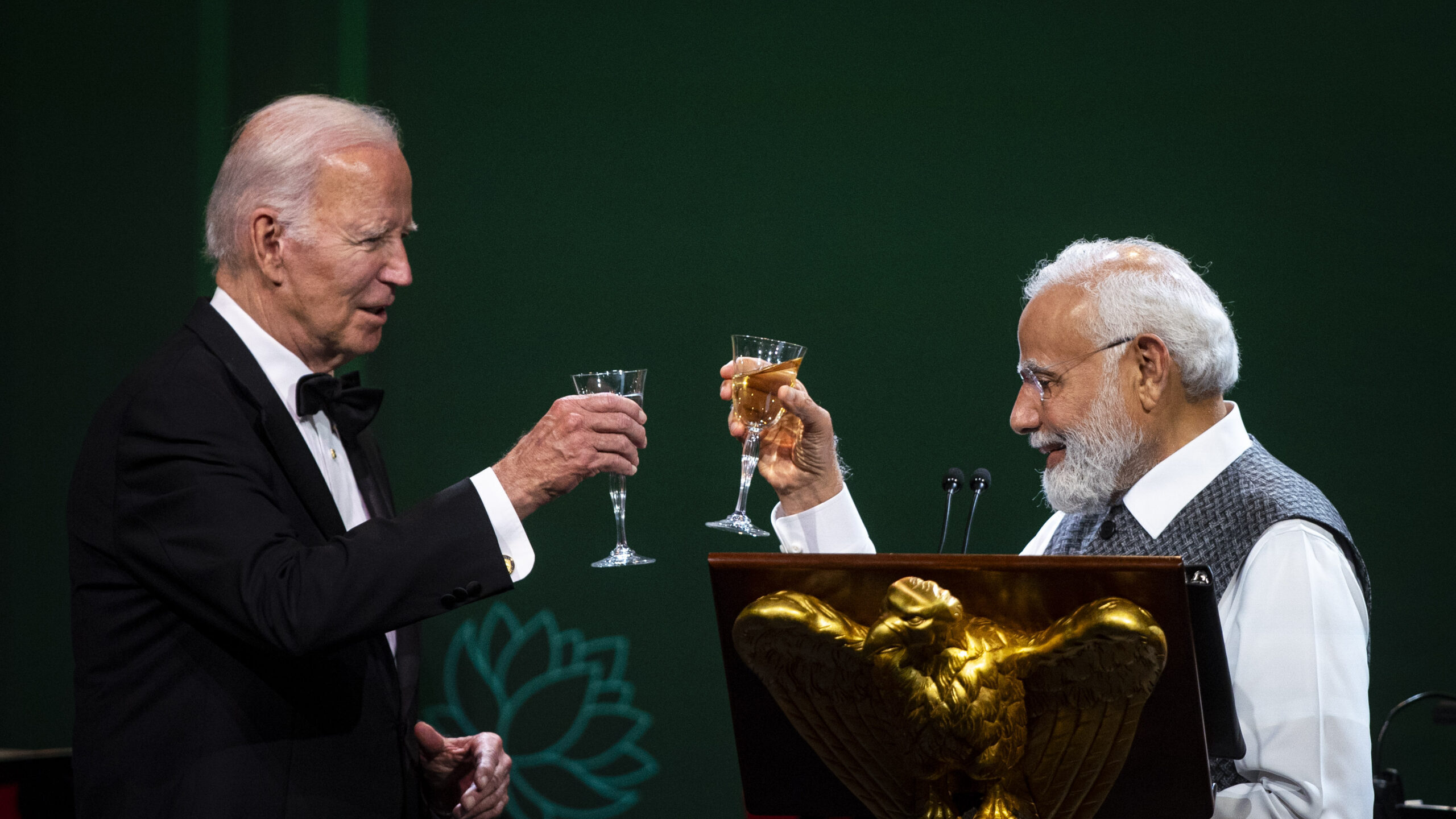ASHLEY ROQUE

US President Joe Biden, left, and Narendra Modi, India’s prime minister, toast during a state dinner at the White House in Washington, DC, US, on Thursday, June 22, 2023. (Al Drago/Bloomberg via Getty Images)
WASHINGTON — Indian Prime Minister Narendra Modi will be heading back from his high-profile US trip this week with a host of new defense-related arrangements, including plans to buy MQ-9B SeaGuardian drones, a “groundbreaking proposal” to jointly produce General Electric’s F414 Jet Engine in India, and a new ship repair deal, the White House announced.
The trip was billed as the catalyst for rolling out new defense collaboration opportunities between the two nations, especially in the realm of technology sharing, even if some details of the initiatives remain scarce.
“The US-India partnership is a cornerstone of a free and open Indo-Pacific and our deepening bonds show how technological innovation and growing military cooperation between two great powers can be a force for global good,” Pentagon Press Secretary Air Force Brig. Gen. Pat Ryder told reporters on Thursday.
Modi, too, referenced a “free, open and inclusive Indo-Pacific” during his address to Congress Thursday, in what appeared to be a dig at Beijing’s increased aggression there.
An announcement about co-production of General Electric’s F414 jet engine in India was among the most high-profile items anticipated to come out of this week’s meetings, and the White House did in fact announce that GE and Hindustan Aeronautics inked a limited memorandum of understanding, and that Congress had been notified of a manufacturing license agreement.
“This trailblazing initiative to manufacture F-414 engines in India — the first of its kind — will enable greater transfer of US jet engine technology than ever before,” the White House said.


















